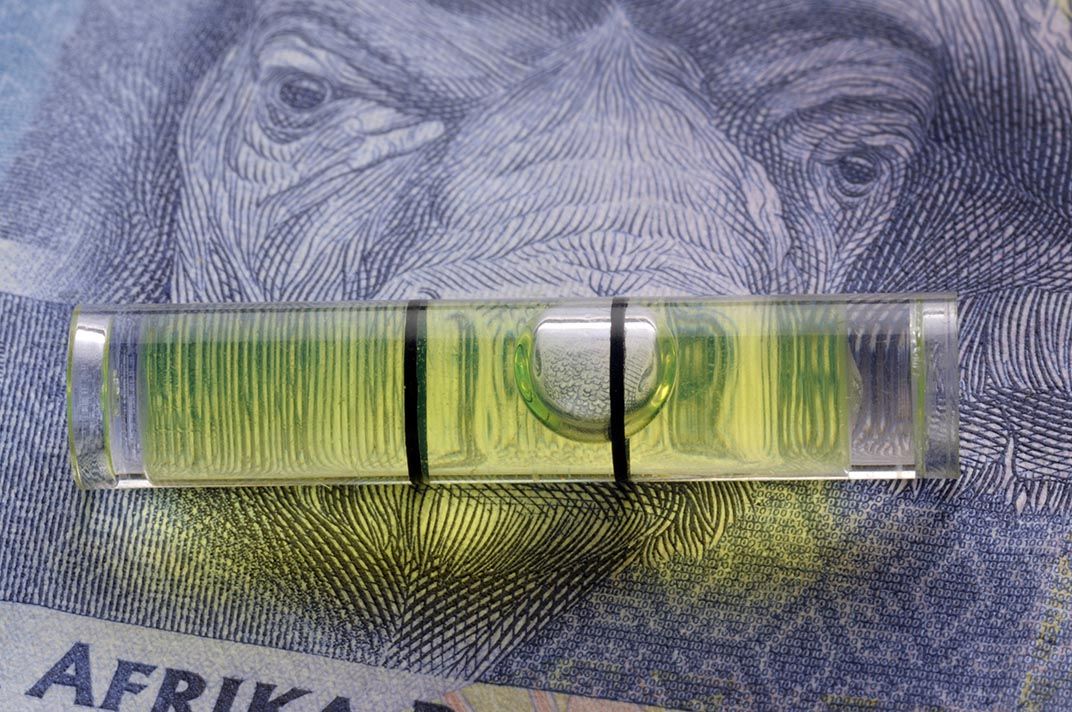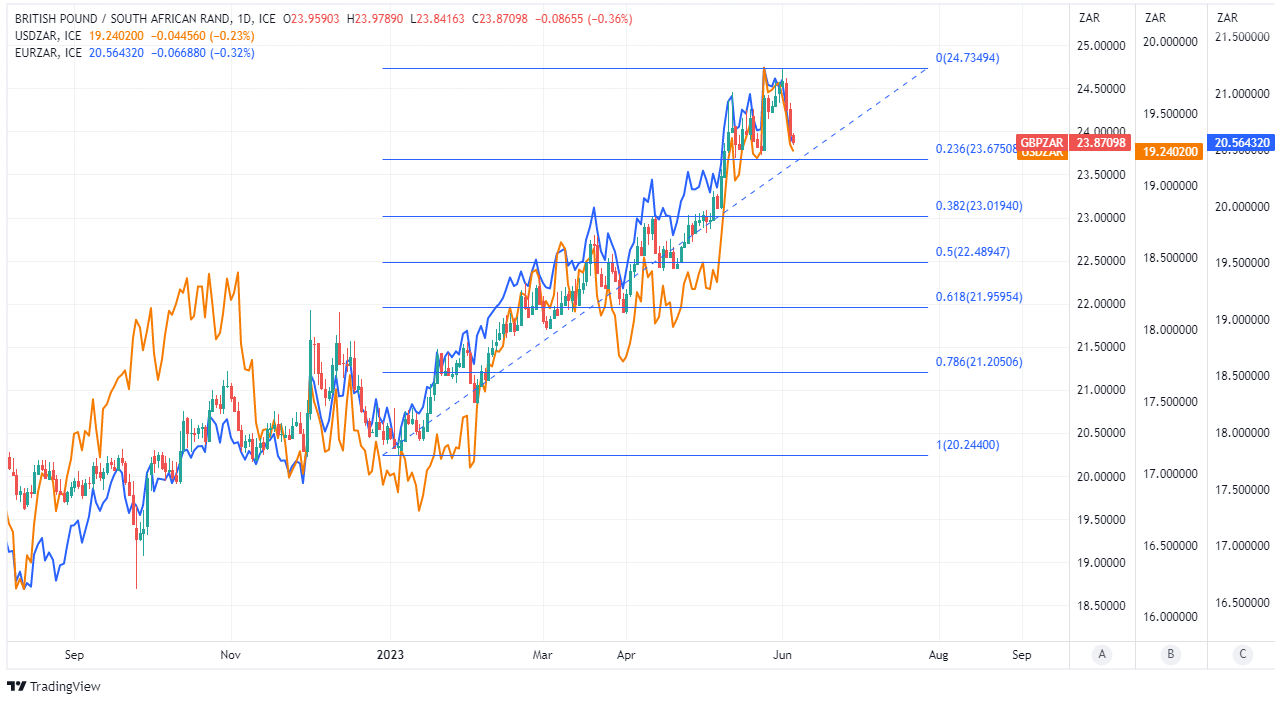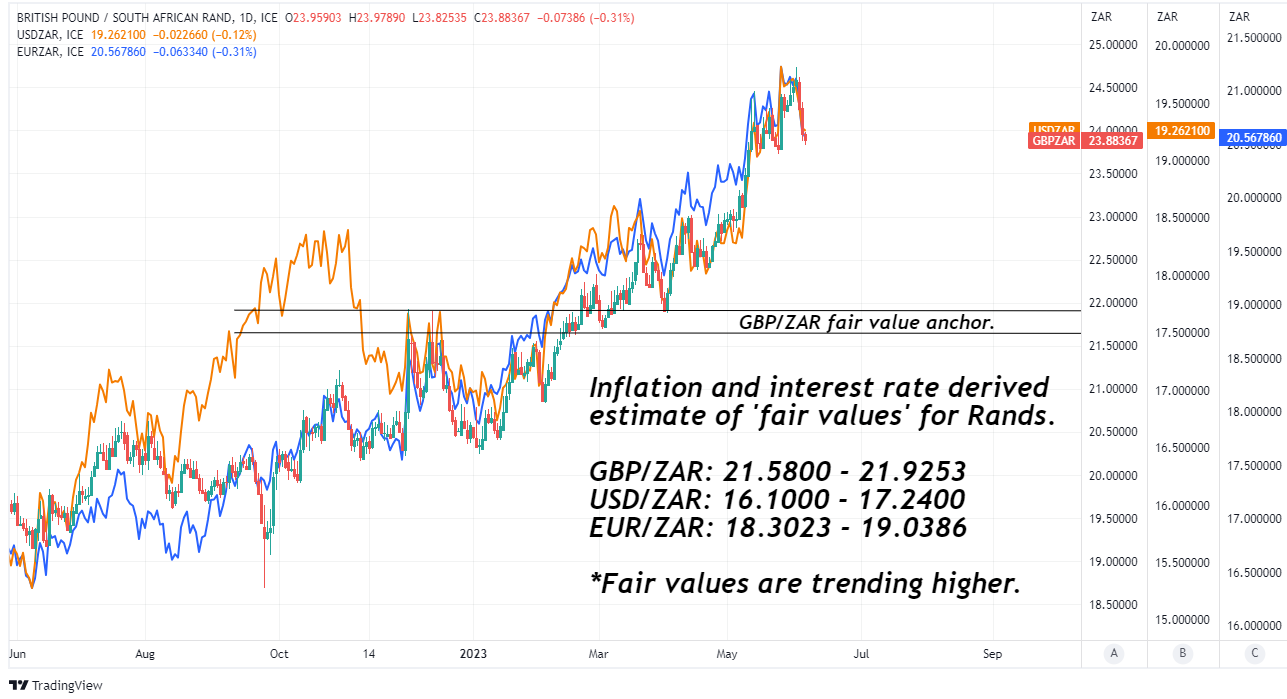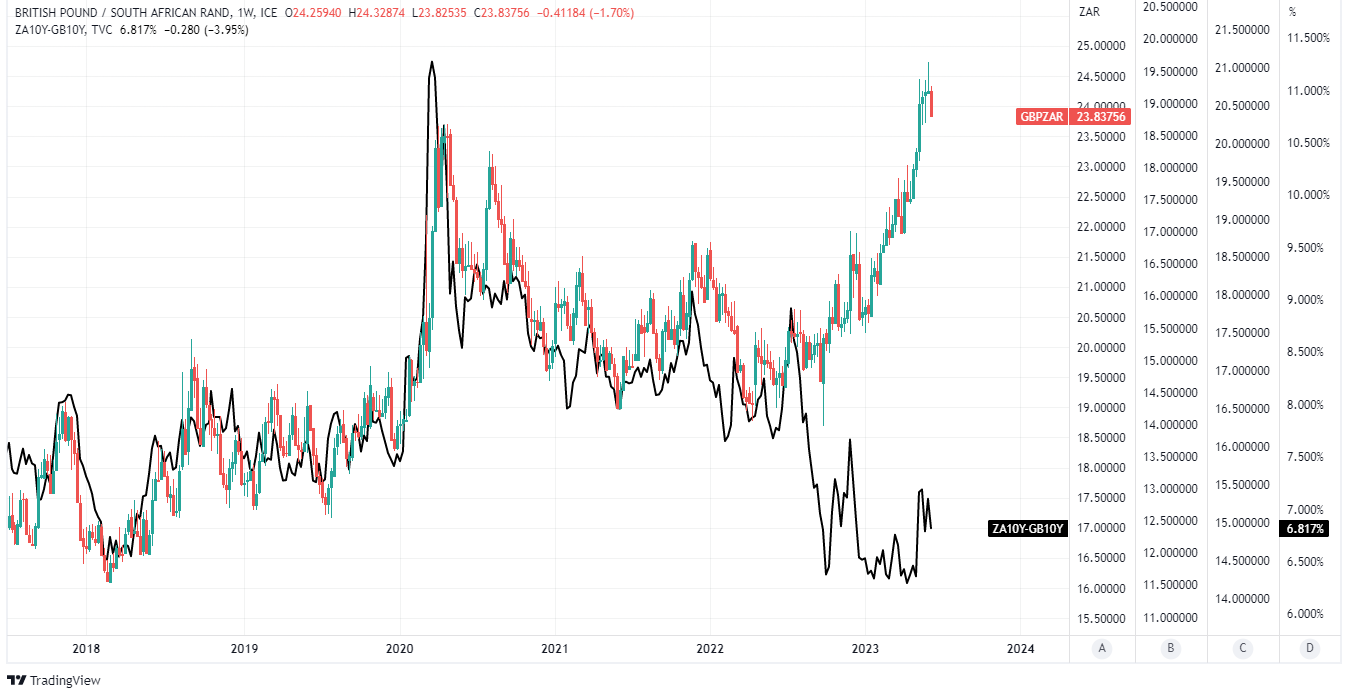Pound to South African Rand Exchange Rate Shows Vulnerability
- Written by: James Skinner
"The ZAR pursued its recovery to below 19.30/USD after the weak US ISM yesterday" - Societe Generale.

Image © Adobe Images
The Pound to Rand exchange rate headed for its longest run of losses since early April this week in what may be a sign of its protracted uptrend reaching a tentative end but the extent of any recovery by the South African currency remains an open question.
South Africa's Rand gave ground to the Russian Rouble and Australian Dollar but rose against all others in the G20 basket to cement its grasp on the top spot in the table for the week to Tuesday after rallying off record lows against the Dollar late last week.
"The prevailing price action was suggestive of some position squaring by stale long USD positions," says Walter de Wett, a fixed income and currency strategist at Nedbank. "Local focus today will be on the GDP release. From the current levels, a move towards the 19,00 level becomes a possibility."
The Rand was little changed on Tuesday after Statistics South Africa said eight out of ten industries including manufacturing and finance had led the local economy to grow 0.4% in the opening quarter and 0.2% in the year to the end of March.
Both numbers were in line with the economist consensus while analysts have cited other domestic and international developments for the Rand's recovery.
Above: Pound to Rand rate shown at daily intervals with Fibonacci retracements of 2023 rally indicating possible areas of technical support and shown alongside USD/ZAR and EUR/ZAR.
"The rand has pulled back towards R19.40/USD, R20.75/EUR and R24.08/GBP on discussions for the BRICS meeting to be hosted in a different country, to avoid the problem of the ICC ordering President Putin’s arrest, with SA an ICC treaty member," says Annabel Bishop, chief economist at Investec.
"The inflationary effect of rand weakness cannot be underestimated, negatively impacting living costs, particularly the lives of the poor whose biggest expenses are typically travel and food, both afflicted by the rand’s severe depreciation against the US dollar," Bishop writes in a Monday research briefing.
The Rand's rebound from record lows against the Dollar has seen GBP/ZAR fall from multi-year highs and coincided closely with the release of European inflation figures for May last Thursday suggesting continental price pressures continued to ease last month.
Europe's single currency rose and the Dollar Index fell in the wake of the announcement, which suggests the inflation threat is diminishing and potentially heralds the beginning of a slow and steady repair of European purchasing power, although other factors both domestic and international may also have helped lift sentiment toward the Rand.
"On Friday, the currency experienced some relief due to rumours suggesting that the BRICS summit might be relocated to China later in the year. This potential shift could alleviate a significant political dilemma faced by South Africa," says Sebastian Steyne, an FX risk and hedging specialist at Sable International.
Above: GBP/ZAR shown at daily intervals alongside USD/ZAR, EUR/ZAR and estimated fair values. Fair values reflect exchange rates discounted for inflation and interest rate differentials prevailing since inflation first exceeded respective central bank targets.
Speculation suggesting a planned 'BRICS' summit could be moved out of South Africa and to a country not currently a signatory to the Rome Statute of the International Criminal Court followed a large Chinese donation of electricity-generating equipment last week and a string of dampening developments for the U.S. Dollar.
"The ISM services index barely displayed any growth at all as new orders slowed and employment dropped below the critical 50 level. Although ISM data indicated that prices paid remained robust, it dropped to a three year low," writes Jane Foley, head of FX strategy at Rabobank, in Tuesday market commentary.
"This will likely come as a relief to the Fed and is certainly supportive of the view that the Fed can afford to pause its tightening cycle this month. In the same vein, US factory orders for April registered softer than expected number," she adds.
U.S. Dollar exchange rates have softened in recent trading sessions and were dampened further on Monday when the Institute for Supply Management (ISM) cited falling employment and sluggish demand as among the factors driving an abrupt slowdown in the U.S. economy's largest sector last month.
The fall in the ISM Services PMI followed hard on the heels of the May non-farm payrolls report out last Friday and revealing a sharp climb in the number of newly unemployed last month, suggesting the Federal Reserve (Fed) is having success in softening the U.S. labour market in order to help bring inflation down.
Above: Pound to Rand rate shown at weekly intervals alongside spread or gap between 10-year South Africa and UK government bond yields.
"The decline in the ISM to 50.3 from 51.9 means the survey is now the lowest since December and arguably offers a more sobering snapshot of the economy at the end of 2Q than payrolls," says Kenneth Broux, an FX strategist at Societe Generale.
"The ZAR pursued its recovery to below 19.30/USD after the weak US ISM yesterday," Broux adds in a Tuesday market commentary.
Already markets and Fed officials alike had almost given up anticipating another increase in the Fed Funds rate for June and were instead betting a final raise would come in July but if the recent softening of U.S. data marks the beginning of a trend there might also be risks to market pricing for July.
Any further moderation of market expectations for Federal Reserve interest rates would be an added dampener for the U.S. Dollar and balm for the South African Rand, which was sold heavily this year amid heightened risks to the South African economy and as financial markets took note of Pretoria's relationship with Moscow.
Economic risks have included disruptions stemming from intense load-shedding at Eskom and the South African Reserve Bank (SARB) interest rate response to high inflation.







